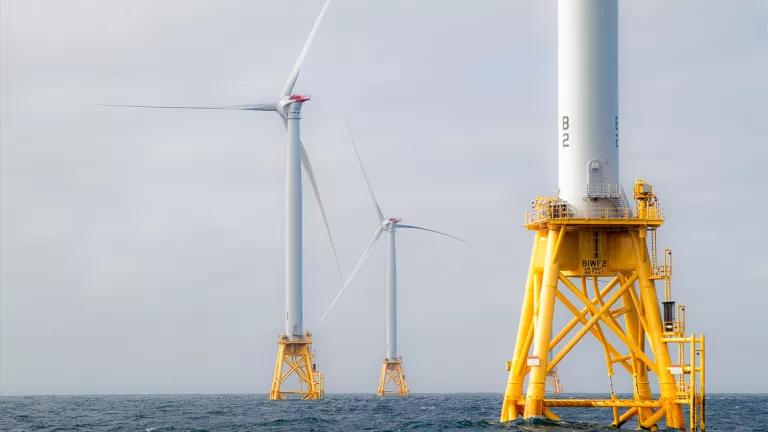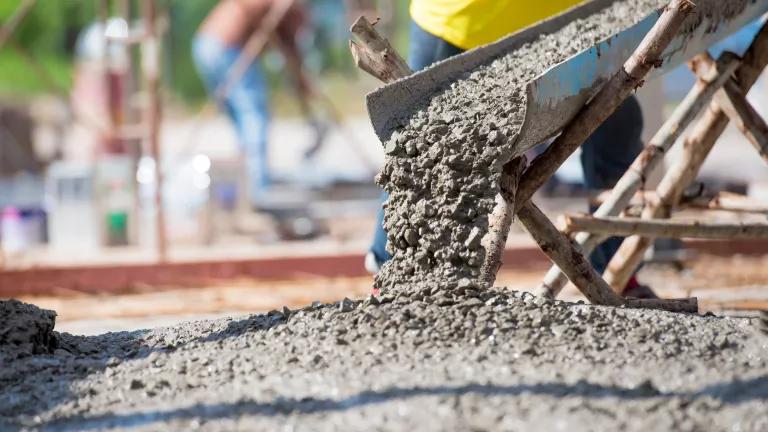There’s been a lot of positive progress this year on eliminating hydrofluorocarbons (HFCs), the super potent climate warmers used as refrigerants in cooling appliances, in foams and aerosols, and more. Whether in the U.S. or almost anywhere else, it was a cool year to curb HFCs. A recap of the action follows.
In the U.S.
In the last days of 2020, Congress enacted the American Innovation and Manufacturing (AIM) Act, a bill calling on EPA to set up an economy wide HFC phasedown.
As we’d hoped, the AIM Act proved to be a springboard for HFC policy progress this year. The country is now embarking on an 85% phasedown in HFC supply over the next 15 years—the same schedule as the U.S. must follow under the Kigali Amendment to the Montreal Protocol. Climate-friendlier alternatives are already taking HFCs’ place, steadily and surely.
As the phasedown gets underway, companies in nearly every sector of the economy using HFCs today will begin switching over to next-generation technologies in the products they make, sell, buy, and use. Chemical makers will also need to stop emitting a climate-damaging byproduct gas—HFC-23, the most harmful HFC of all—during the manufacture of these and other chemicals.
In September, EPA published the core rules to bring the AIM Act to life, including a first cut at implementing the phasedown. NGOs like NRDC have pushed for strict rules of the road through public comments, petitions to ban HFC use from specific applications, and more. Companies across a wide range of industries, for their part, have been innovating better products, retooling factories, and preparing distribution networks and supply chains to transition fully into the next generation of climate-friendlier alternatives.
By and large, environmentalists, regulators, and industry have worked together in relative harmony to make this all happen. We’ve transitioned refrigerant gases before, replacing a first and then a second generation of chlorine-containing refrigerants that were found to be destroying the earth’s protective ozone layer. Companies now know what to expect of these transitions, and have largely come to support them. The reason? The technological innovation companies must bring to bear to transition refrigerants has made them more competitive at home and in global markets, and they’ve come to recognize it.
There are some flies in the ointment, of course. A few companies have brought court challenges objecting to two enforcement measures EPA set up: banning disposable, single-use HFC cylinders in favor of refillable cylinders and QR-code tracking of HFC cylinders. These are common-sense enforcement measures NRDC supported in the rulemaking, and we’ll stand by EPA as it works to put these provisions into action.
Things are moving forward in the U.S. on ratifying the Kigali Amendment, too. Upon taking office, President Biden instructed the State Department to prepare to ratify the agreement, and last month the administration sent the treaty amendment to the Senate. The chamber will now begin its process of deliberation and, we expect, give its advice and consent to ratification.
Around the globe
Kigali Amendment ratifications—the step that brings countries formally into the pact to phase HFCs down—are picking up speed around the world, too. This year saw international heavyweights India and China ratify the agreement, along with 15 others from all over the globe. A total of 129 countries have now ratified, setting the Kigali Amendment on course to be as widely adopted as prior amendments to the Montreal Protocol.
Speaking of the treaty, the parties to the Protocol have continued plugging away during this second full year of virtual global meetings. Although it isn’t easy, representatives of well over a hundred countries have come together virtually several times this year to keep the stream of progress flowing. Delegations and treaty officials at the Ozone Secretariat and the project-administering Multilateral Fund (MLF) have done their best to keep the work of this critical treaty going despite the pandemic.
In February, excellent news for the ozone layer and climate came in the form of two scientific papers showing that the global and east-Asia regional spike in CFC-11 emissions has been steadily and durably retreating. The elevated emissions are thought to have originated from illegal production of insulating foams using CFC-11, a gas banned from production worldwide since 2010.
In the months since, attention has turned to the need to increase the scientific community’s ability to monitor the atmosphere for HFCs, CFCs, and other fluorocarbons that are under the Montreal Protocol’s controls. There are big geographic gaps in the monitoring network. Effective monitoring is part and parcel of holding countries accountable for the obligations they take on under the treaty.
Importantly, countries have continued to make financial contributions to the treaty’s Multilateral Fund, to help the poorest countries phase out the remaining ozone-destroying gases, and preparations are being made for a significant scale-up in funding to prepare for the global HFC phasedown, which starts for developing countries in 2024. An increased funding level is expected to be decided at the end of next year, called the MLF ‘replenishment.’
A final area of continued excitement is the possibility of vastly improving the energy efficiency of cooling appliances as we transition away from HFC refrigerants. The refrigerant change makes for a good opportunity for other improvements: when a factory is being reconfigured to build products that use new refrigerants, it’s a good time to upgrade other aspects of those products, too. This year, the Government of India and the Rocky Mountain Institute crowned winners of the Global Cooling Prize, a competition to make a typical split room air conditioner that has only 20% the climate impact of standard models today. Gree and Daikin won the challenge – both using low global warming potential refrigerants—and Gree and Haier (a runner-up) have committed to bringing their models to market by 2025.
All told, it was a pretty cool year in the global drive to curb HFCs. In the new year we’ll press forward to put these harmful climate-warming pollutants in the rearview mirror once and for all.




